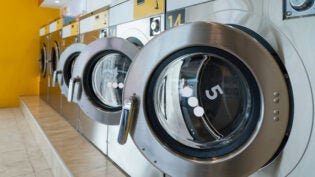
If you’re launching a biotech startup, or if you’re starting a business that will rely on scientific research, you know the startup costs can be enormous. Getting all the equipment, personnel, and other resources you need to run your lab efficiently means collecting millions of dollars, or more, and spending that money wisely. Fortunately, there are several ways you can minimize your costs without sacrificing the quality of your research.
Lease Your Lab Equipment
One of your best options is to lease your lab equipment, rather than buying it outright. This approach is similar to what you might find when leasing a car; instead of paying a lump sum for the equipment, or taking out a loan to pay for it, you’ll be responsible for a monthly payment to retain use of the lab equipment. Leases usually occur over a fixed period of time, like a year or 2 years, and may have options for renewing the lease or purchasing the equipment.
This can greatly reduce your initial capital burden, and provide you with other benefits, including:
- Replacement and reliability. First, if a piece of equipment breaks or is faulty, you won’t have to worry about replacing it yourself. Your lease makes the owner of the equipment responsible for some of its ongoing maintenance needs and reliability.
- Flexibility. Leasing also affords you more flexibility. You can lease as much or as little equipment as you want, you can easily scale your lab as you grow, and if you acquire too much and end up with unused equipment, you can make changes to your arrangement.
Choose the Right Location
Much of your costs will relate to your geographic position. For your main lab, you’ll need a physical environment in which to work—usually a big one, with plenty of onsite resources and amenities to support your work. You may be able to cut costs by choosing a smaller place to buy or lease, or by sacrificing certain amenities, but these approaches can compromise the quality of your work in some ways.
It’s much easier to choose a more favorable geographic location. Different states and different cities will offer very different cost of living levels; you’ll likely pay far more for a lab in the heart of a popular downtown area than you would in a rural area of the Midwest. Obviously, there are advantages to gain by having your lab in a heavily populated area, or one with other amenities; the prices tend to be higher for a reason. Still, you can save money and get most of what you need by searching elsewhere.
Hire Gradually and Carefully
Like in most startups, one of your biggest costs of lab operations is going to be hiring and maintaining your staff. If you hire people indiscriminately, filling up all your positions as quickly as possible, you could end up with inefficient choices. Similarly, if you have too many people on staff, you’ll be wasting money that could be spent making the lab better.
Scrutinize Your Purchases
You can also save money in a lab environment by more carefully scrutinizing all your purchases. Instead of buying something directly, ask yourself if there’s any suitable, less expensive substitute. In some cases, you may be able to create something you need by yourself. In other cases, you may be able to make bulk purchases to save money per-unit, or you may be able to negotiate to get the costs down.
Outsource
Finally, you can outsource some of your lab services and functions. This is one of the most complex recommendations in this guide, and it comes with a few important caveats. First, understand why outsourcing can be valuable for labs. There are many functions your lab will be able to do well, but a lack of equipment, expertise, or other resources means that there’s likely another lab that can handle it more efficiently; you’ll spend less money hiring them to complete the task than you would investing in the materials you’ll need to do it on your own.
Of course, there are some drawbacks to outsourcing as well. For example, not all lab services or functions are outsourceable. You may also struggle with logistical hiccups, like a significant delay in your processing or issues with quality and reliability. You’ll need to scout and vet your outsourcing partners carefully, and only choose to work with partners who can fully support your vision for the business.
These strategies and others can help you save money on your initial lab setup, as well as your ongoing management costs. In most businesses, your number one goal should be providing high-quality, consistent services, so saving money is typically secondary. However, trimming your costs where possible can greatly improve your efficiency overall.
2890 Views












